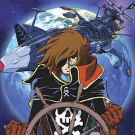Tidal Locking - Equestrian Orbital Mechanics
-
Similar Content
-
- 7 replies
- 167 views
-
- 61 replies
- 3,816 views
-
- 0 replies
- 1,075 views
-
- 2 replies
- 421 views
-
- 154 replies
- 62,555 views
-
-
Recently Browsing 0 members
- No registered users viewing this page.



.thumb.png.ea6ea28a6cdbfd3863515f959d5ec1f1.png)
.thumb.gif.e4f929af3c468589c8eea5ff1be52106.gif)
Recommended Posts
Create an account or sign in to comment
You need to be a member in order to leave a comment
Create an account
Sign up for a new account in our community. It's easy!
Join the herd!Sign in
Already have an account? Sign in here.
Sign In Now